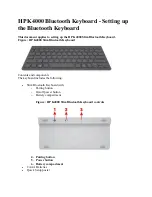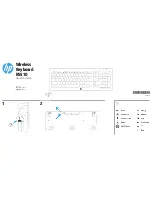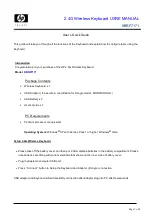
q
q
q
q
A-100 Connector
This 9 pin sub-D connector can be used to establish the connection between the A-
100CGK and an A-100 system with one cable only by means of the planned A-
100CGK adapter module. The connector carries the signals Gate, CV1, CV2, CV3
and midi out. In addition the A-100CGK is powered by the power supply of the A-100
system if the adapter board is used. The power supply connector
n
is then no longer
used.
r
r
r
r
Gate
This 3,5 mm jack socket is the gate output of the
A-100CGK
. According to the
chosen gate polarity (positive or negative) and gate voltage (+5V, power supply
voltage or S-Trig) the corresponding gate signal is available at this socket.
Usually this socket is connected to the gate input(s) of the envelope generator(s),
e.g. ADSR's A-140, A-141 or A-143-2. If more than one envelope generator has to be
triggered a multiple (A-180) or bus access module (A-185-1) can be used. For details
please refer to the user manual of the corresponding module.
The gate output can be used for other applications too: e.g. advance to the next step
of an analog (A-155) or gate/trigger sequencer (A-160/161) or sequential switch (A-
151, A-152), controlling a voltage controlled switch (A-150), triggering a sampler
module (A-112), resetting an LFO (A-145) and many more. In general the gate output
can be used to control any gate or trigger input of an A-100 module.
In addition the gate output can be processed e.g. by a slew limiter (A-170, A-171) to
obtain a slowly increasing or decreasing control voltage that can be used to control
other modules, e.g. the frequency of a VCLFO (A-147), or the amplification of a VCA
(A-130/131/132) to obtain increasing/decreasing levels (audio or CV, e.g. LFO depth
for frequency modulation). Even the usage of the gate signal as a CV input can be
useful (e.g. switching between two different frequencies of a VCLFO A-147).
s
s
s
s
CV1
This 3,5 mm jack socket is the control voltage output of the
A-100CGK
that is
controlled by the number of the key pressed on the keyboard. The voltage range is
0...+5V, the scale is 1V/octave. Inside the device there is a trimming potentiometer
that can be used to re-adjust the scale if necessary. As the case has to be opened
for this the procedure should be carried out by a specialized company only.
Usually this socket is connected to the 1V/oct CV input(s) of the voltage controlled
oscillator(s) (VCO's), e.g. A-110 or A-111-1/2. Even CV input of the sampler module
A-112 can be controlled to play a recorded sample with the keyboard. If the filter
used in the patch should follow the VCO frequency (called
keyboard tracking
) the
CV1 has to be connected to the filter module too.
If more than one VCO/VCF has to be controlled a multiple (A-180) can be used for
signal distribution. If more than two VCO/VCFs have to be connected to the CV1
output of the A-100CGK a bus access module (A-185-1) or precision adder module
(A-185-2) is recommended instead of a simple multiple to avoid signal losses that
may cause scale or tuning problems. For details please refer to the user manual of
the corresponding module.






























